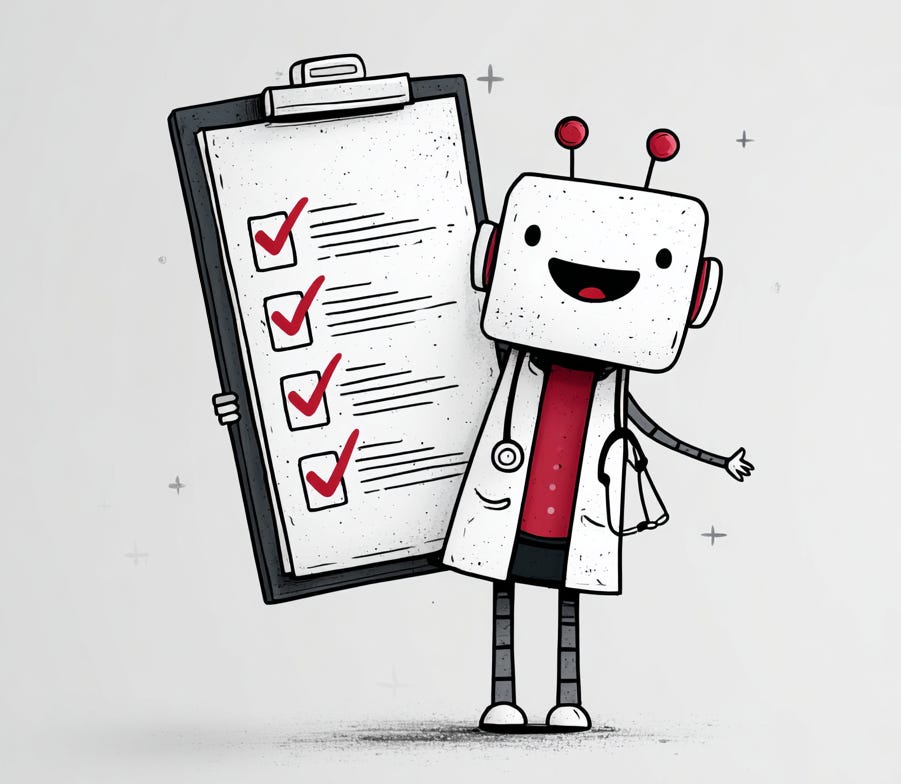The One Prompt That Makes All Your Other Prompts Better
Use AI to teach you how to use AI better. It's easier than you think.
You ask AI to analyze your data and get back a generic response that could apply to any dataset.
You request help with a presentation and receive a wall of text you can't use in front of stakeholders.
You ask for dashboard feedback and AI gives you vague advice like "improve the layout" instead of specific fixes you can actually implement.
Sound familiar?
We've all been there: twenty minutes of back-and-forth, adding more details each time, getting closer but never quite hitting the mark. You end up frustrated and wondering why AI works great for everyone else but not for you.
Here's what most people miss: AI can teach you how to talk to AI.
Instead of guessing why your prompts aren't working, just ask the AI to diagnose and improve them.
The Approach That Actually Works
Most of us treat AI conversations like Google searches.
We throw keywords at it and hope for the best. When it doesn't work, we either give up or keep adding more words to the same broken request.
But AI isn't a search engine. It's more like a really smart colleague who needs context to help you well.
The difference?
You can ask that colleague: "What information do you actually need from me to solve this properly?"
The Prompt Doctor Conversation
When your current prompt isn't working, try this exact template:
I want you to act as a prompt engineering consultant.
Here's a prompt I've been using: [YOUR PROMPT]
The output I'm getting is: [DESCRIBE CURRENT RESULTS]
What I actually need is: [DESCRIBE IDEAL RESULTS]
Please analyze what's working and what isn't, then suggest 3 specific improvements."Quick Diagnostic Rules
When your prompts aren't working consistently, check these three areas:
If Clarity < 8 → Add concrete examples of what good output looks like
If Context < 8 → Add business purpose, target audience, or known constraints
If Specificity < 8 → Add success metrics, preferred format, or timeline
Try this prompt:
Rate my prompt on clarity, context, and specificity (1-10 each): [YOUR PROMPT].
For anything below 8, tell me exactly what to add."Expert Translation Dialogue
Sometimes you know what you want but can't put it into words:
You:
Take my basic request: [SIMPLE PROMPT]. Rewrite this like an expert would ask it."AI: "Here's how I'd structure that request: [IMPROVED VERSION]"
You:
What did you add that I was missing?AI: "I included the business context, specified the output format, and clarified the decision this analysis will inform."
Now you know exactly what to include next time.
See It in Action
Dashboard Review Example:
Before:
Review this dashboard and tell me what's wrong with it.After Meta-Prompting:
Review this sales dashboard for our monthly leadership meeting.
Focus on: data accuracy, visual clarity for executives, and whether it answers our key questions about regional performance trends.
What specific changes would make this more effective for a 15-minute presentation?What changed:
Added audience (executives), purpose (monthly meeting), timeframe (15 minutes), and specific focus areas (accuracy, clarity, regional trends). The result? Actionable feedback instead of generic suggestions.
Once you rewrite a few prompts like this, you'll notice a consistent pattern in what AI asks for...
The Pattern You'll Start Noticing
Once you try this a few times, you'll see AI consistently asks about the same things. Learning these patterns helps you include context upfront:
Things AI will usually ask you about:
Your data: sources, timeframe, volume, quality issues
Your goals: business decision, audience, success metrics
Your constraints: tools available, timeline, known limitations
Your focus: key patterns, important metrics, assumptions to test
It's the same context a human colleague would need. Once you know what's coming, you can provide it upfront and skip the clarification round.
Try These Right Now
For SQL Help:
Rate this SQL request for clarity: [YOUR TYPICAL SQL PROMPT]
What context about my database, business logic, or performance needs would help you give better suggestions?"For Analysis Planning:
I typically ask for analysis help like this: [YOUR USUAL REQUEST]
What business context, data constraints, and success criteria should I include to get more targeted guidance?"Why This Actually Matters
Here's a small habit that builds up over time. After any AI conversation that took longer than it should have:
Quick Fix Template:
I just used this prompt for [specific task] but had to clarify [what you had to explain].
How would you modify the original prompt to handle this automatically next time?Save the improved version. Do this consistently for two weeks, and you'll have a collection of prompts that just work.
You will notice a change after you do this a few times.
Those clarifying questions AI teaches you start becoming how you naturally think through data problems.
Better AI conversations, clearer stakeholder emails, more focused analysis - it all connects.
When you practice specifying business context and success metrics for AI, you naturally start doing the same thing with human colleagues. It doesn't just improve AI responses - it sharpens how you think about problems.
Your Turn
Don't try to fix every prompt you write. Just improve one you used this week, save the better version, and repeat. That's how you build a library of prompts that actually work.
What's the most frustrating AI conversation you had recently? Try running that original prompt through the Prompt Doctor and see what you discover.
Hope this was helpful!
Chat soon,
Donabel


